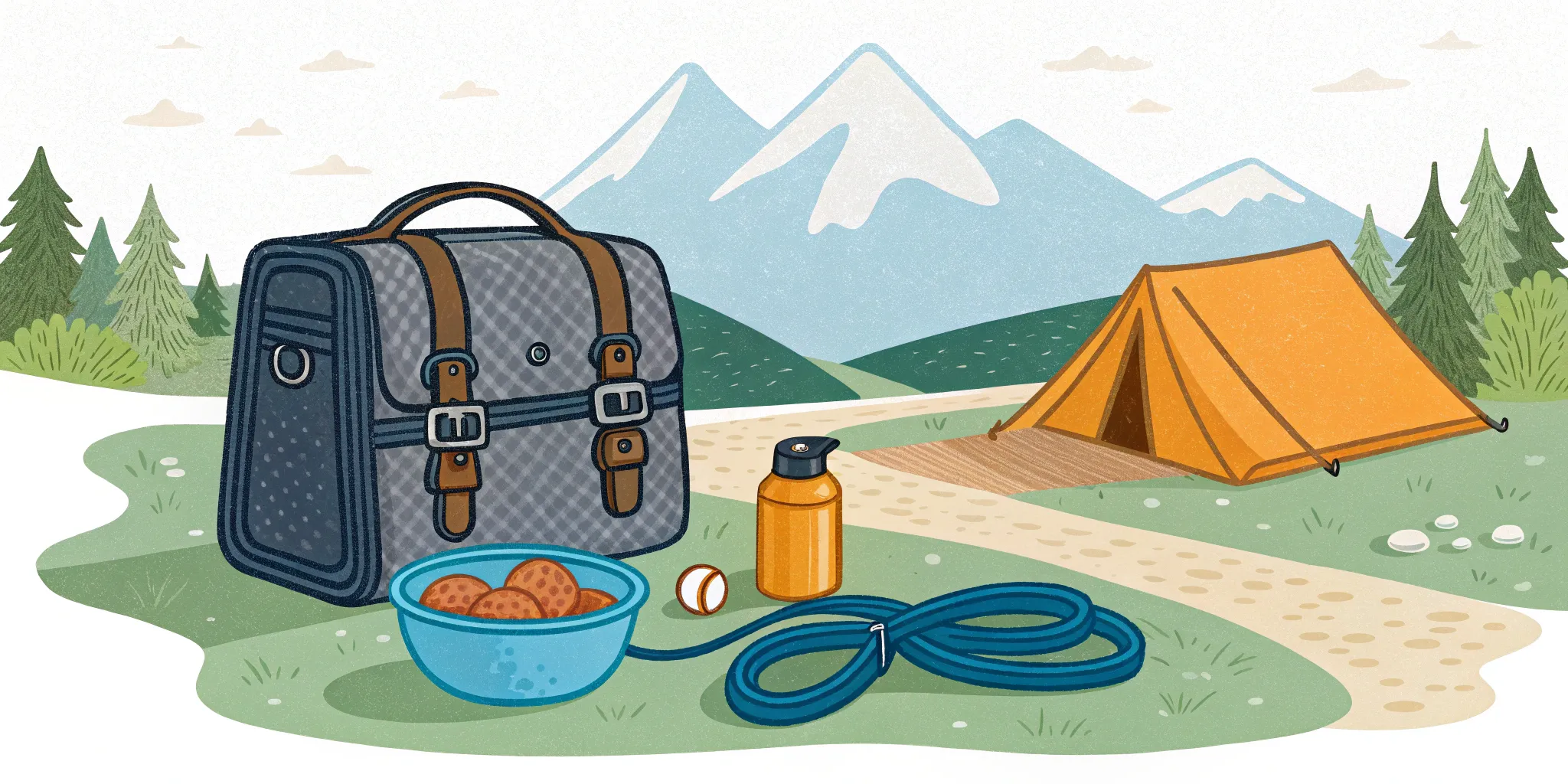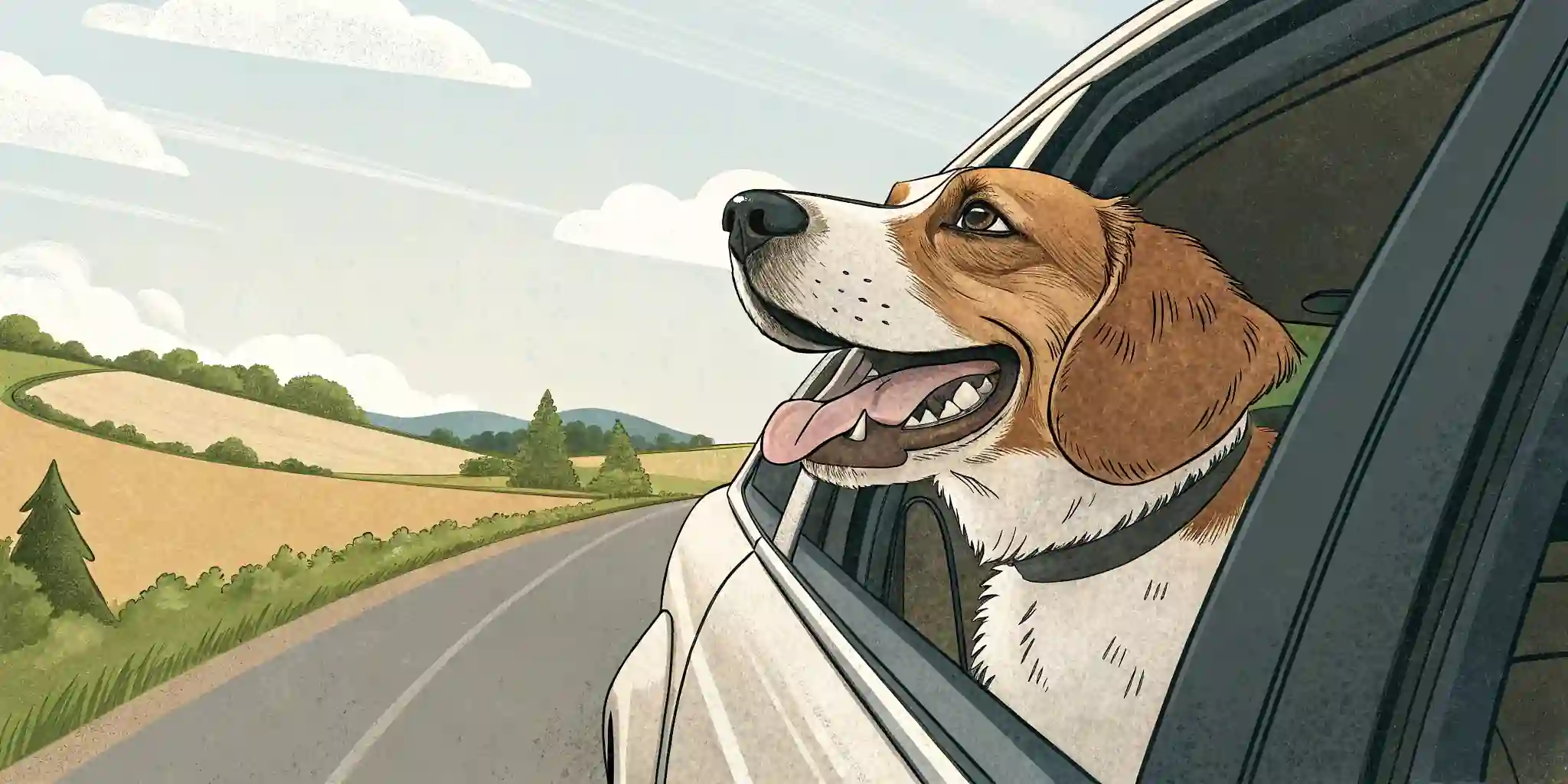
Dog Travel Safety: Car Rides & Trips Made Easy
Dog travel safety is key! 🚗🐕 Learn essential tips for stress-free car rides & unforgettable trips. Adventure awaits!
Travel Safety with Your Dog: Tips for Car Rides and Trips
Traveling with your furry friend can be an incredibly rewarding experience. Imagine scenic hikes with your canine companion, exploring new dog parks, and creating lasting memories on road trips. However, ensuring your dog’s safety and comfort during travel is paramount. Whether it’s a quick trip to the vet or a cross-country adventure, proper planning and preparation can make all the difference. This article covers essential tips for car rides and trips, helping you keep your dog safe and happy on the road.
Preparing for the Journey: Essential Checklists
Before you even pack your bags, it’s crucial to ensure your dog is physically and mentally prepared for the journey.
- Veterinary Check-up: Schedule a check-up with your veterinarian, especially if your dog is prone to motion sickness or has pre-existing health conditions. Discuss any concerns about travel anxiety or potential health risks during the trip.
- Update Vaccinations and Microchip Information: Ensure your dog’s vaccinations are up-to-date, and that their microchip information is accurate. This is especially important if you’re crossing state lines or visiting areas with different disease risks.
- Pack a Dog Travel Kit: Just like you need your essentials, so does your dog. This kit should include:
- Food and water bowls
- Plenty of food and water
- Leash and collar/harness with ID tags
- Waste bags
- First-aid kit tailored for dogs (including antiseptic wipes, bandages, and any medication your dog takes)
- Favorite toys and a comfortable blanket or bed
- Any necessary documentation (vaccination records, health certificates if required)
 Image: A well-organized dog travel kit including food bowls, leash, toys, and a first-aid kit, essential for “travel safety with your dog.”
Image: A well-organized dog travel kit including food bowls, leash, toys, and a first-aid kit, essential for “travel safety with your dog.”
Car Safety: Restraints and Comfort
One of the biggest mistakes I see pet owners make is letting their dogs roam freely in the car. This is incredibly dangerous – both for the dog and the driver.
- Crates and Carriers: For smaller dogs or puppies, a secure crate or carrier is the safest option. Make sure the crate is properly secured to the car seat to prevent it from sliding or tipping during sudden stops.
- Dog Seat Belts and Harnesses: Larger dogs should be secured with a dog seat belt or harness that attaches to the car’s seat belt system. These restraints prevent your dog from becoming a projectile in the event of an accident.
- Never Let Your Dog Ride in the Front Seat: Airbags are designed for human safety and can be fatal for dogs. Always keep your dog in the back seat.
- Protect Your Car: Use a seat cover to protect your car’s interior from dog hair, dirt, and scratches. There are many car seat covers designed specifically for dogs to provide them comfort and a place to relax.
- Temperature Control: Never leave your dog unattended in a parked car, especially during hot weather. Even on a mild day, the temperature inside a car can quickly rise to dangerous levels. “I’ve seen it happen far too many times, and it’s absolutely heartbreaking.” Always ensure your car has proper ventilation and air conditioning, and consider using window shades to block out direct sunlight.
- Gradual Acclimation: If your dog isn’t used to car rides, start with short trips and gradually increase the duration. This will help them get accustomed to the motion and reduce anxiety.
Managing Motion Sickness and Anxiety
Motion sickness and anxiety are common problems for dogs during travel. Here are some strategies to manage these issues.
- Medication: Talk to your veterinarian about anti-nausea or anti-anxiety medications if your dog is prone to motion sickness or travel anxiety. There are several safe and effective options available, but it’s important to get a prescription from your vet.
- Natural Remedies: Some natural remedies, such as ginger or chamomile, may help alleviate motion sickness or anxiety. Consult with your veterinarian before using any herbal remedies to ensure they are safe for your dog.
- Create a Positive Association: Make car rides a positive experience by associating them with fun activities, such as going to the park or visiting a friend. Reward your dog with treats and praise during and after car rides.
- Frequent Breaks: Stop frequently for potty breaks and allow your dog to stretch their legs and get some fresh air. This can help reduce motion sickness and anxiety. A good rule of thumb is to stop every two to three hours for at least 15 minutes.
 Image: A happy dog safely sticking its head out of a car window, enjoying a road trip.
Image: A happy dog safely sticking its head out of a car window, enjoying a road trip.
Road Trip Essentials: Making the Trip Enjoyable
A long road trip requires extra planning to ensure your dog’s needs are met.
- Plan Your Route: Choose dog-friendly routes with plenty of rest stops and pet-friendly accommodations. Use online resources and apps to find dog parks, hiking trails, and other dog-friendly attractions along the way.
- Pet-Friendly Accommodations: Book pet-friendly hotels or rentals in advance to avoid any surprises upon arrival. Check the hotel’s pet policies regarding size restrictions, breed restrictions, and pet fees. “I always recommend calling the hotel directly to confirm their pet policies and make sure they align with your dog’s needs.”
- Stay Hydrated: Bring plenty of water for your dog and offer it frequently, especially during hot weather. Consider using a travel water bottle designed specifically for dogs.
- Proper Identification: Ensure your dog has proper identification, including a collar with ID tags and a microchip. Consider attaching a temporary tag with your contact information and destination address to your dog’s collar during the trip.
- Be Prepared for Emergencies: Know the location of the nearest veterinary hospitals along your route in case of an emergency. Keep a copy of your dog’s medical records with you.
 Image: A well-behaved dog resting comfortably in a pet-friendly hotel room, ready for the next leg of the journey.
Image: A well-behaved dog resting comfortably in a pet-friendly hotel room, ready for the next leg of the journey.
After the Trip: Ensuring a Smooth Transition Back Home
After a long trip, it’s important to help your dog adjust back to their normal routine.
- Rest and Relaxation: Allow your dog plenty of time to rest and relax after the trip. Avoid strenuous activities for a few days to allow them to recover.
- Monitor for Any Health Issues: Keep an eye out for any signs of illness, such as vomiting, diarrhea, or lethargy. Contact your veterinarian if you have any concerns.
- Re-establish Routine: Gradually re-establish your dog’s normal routine, including feeding times, walks, and playtime. This will help them adjust back to their familiar environment.
By following these tips, you can ensure that your dog has a safe, comfortable, and enjoyable travel experience. Remember, a little planning and preparation can go a long way in keeping your furry friend happy on the road. And who knows, you might even find that “long distance car rides with dogs who get car sick” become a fun and bonding experience!


